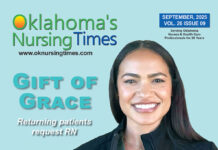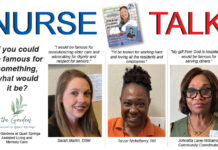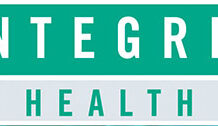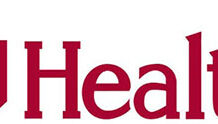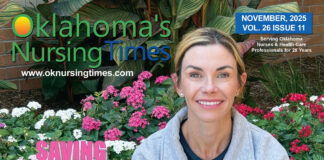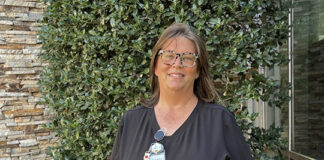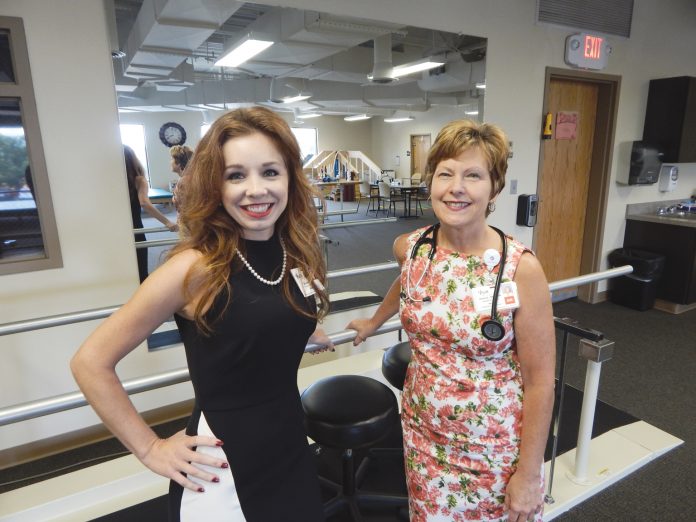
by James Coburn
Staff Writer
Mary Lou Popplewell has gained a lot of confidence, she said. She can walk across the floor without any help now that she has participated in the Valir Pace program.
“The girls walk behind me but don’t hold on to me and let me do it myself. They worked on my hands where I can lift them up but not move them yet. They have worked on my hands real good. I’ve gained a lot of confidence. I can walk across the floor with no help,” Popplewell said.
PACE is an acronym for All Inclusive Care for the Elderly. It’s a revolutionary approach to health care that allows services to transcend a bricks and mortar environment. Care is provided in a holistic and collaborative way with participants across all levels of care and across all environments, said Brandy Bailey, program director.
“Nurses and our other care team members have a unique opportunity to partner with participants longitudinally through the journey of their wellness,” Bailey said. “They may go into their homes, into facilities, visit them in hospitals and to carefully coordinate and manage their services, to empower our seniors to live life independently, healthier and longer.”
The PACE program serves the Oklahoma City metro area within a 30-mile radius from the Valir Rehabilitation Hospital in midtown. The program serves those seniors who are age 55 or older needing a nursing level facility of care. They must be able to live independently in the community with the assistance of PACE, Bailey said.
PACE currently serves 111 participants. PACE will encompass 119 participants effective September 1.
“We continue to grow,” Bailey said. “We’ve already identified an alternative care site where we will need to get licensed to initiate services that’s south of our location. And, we’re going to be working on a collaborative partnership with Variety Care, the federally qualified health center, and also with the Oklahoma City Housing Authority.
The focus of that site is to create a center that is closer to the location of where many Valir PACE participants live. So it will provide easier access for those individuals, Bailey continued.
The PACE program is a 501C3 not-for-profit. It receives integrated funding through Medicare and Medicaid based on the participants acuity.
“We also have the opportunity to solicit donations from grants and philanthropic investors,” Bailey said.
Director of Nursing Anne Dugan, RN, said all of the Valir staff is there because they feel Valir is where they need to be. They feel they can make a great difference in rehabilitating the health of the senior population, she said.
“We’ve all been in hospitals, nursing homes or other places where you felt like sometimes your hands were tied,” Dugan said. “They needed something but yet you couldn’t get that for them. The difference in the PACE way of doing things — if it’s medically indicated we can get that for the participant.”
If patients need grab bars, a walker or a hospital bed, PACE can get the equipment if it will help the client remain safe.
An interdisciplinary team meets every morning at 8:10 a.m., involving physicians, nurse practitioners, nurses, social work, dietary, activities, therapists and home care to discuss what happened the previous day.
If a patient is subject to fall, the team will get the patient a Life Alert monitor. They may need a walker or more physical therapy.
“We can make that decision that day and start implementing,” Dugan said. “You don’t get that in a hospital or in home health.”
She has worked in a lot of places and thought they had team work, but the daily discussions of the PACE participants can make immediate change.
“Being able as a nurse — if we have somebody in the hospital — if we have participants in a nursing home we can go and see them. We can keep track of them,” Dugan said.
PACE participants may be on the program for the rest of their lives unless they choose to leave. The nurses get to witness the continuum of care involving people who have been hospitalized repeatedly for months because they lack the money for medications and care.
“We make sure they have their medications. There is always somebody on call if someone calls us at night and they’re having trouble breathing,” Dugan said. “One of the nurses goes out.”
Bailey said one of the most unique aspects of the program is not only is PACE reactive to acute and chronic conditions.
“We are very proactive in creating an environment of enthusiastic wellness,” Bailey said. “We do a lot of exercise groups and we do a lot of home exercise programs as well. So we try to empower our participants with tools to be successful and continue on their wellness journey, even when they’re not in our building under our guidance and care.”
They receive nutritional education, exercise programs and equipment to enable their independence longer. There are cooking classes and recreational activities.
“When they are not here, we are encouraging not only that physical movement but that positive engagement as well, the peer-to-peer relationship development and all of those things that are supportive of a participant maintaining their independence or cognitive and physical functioning as long as possible.”



